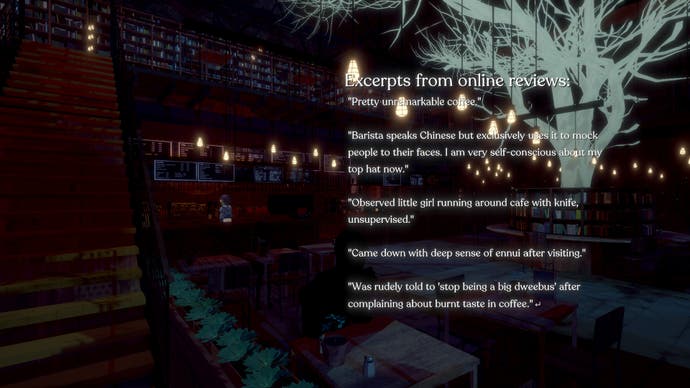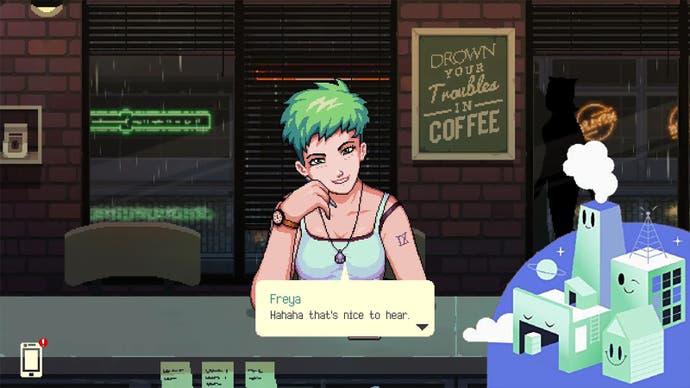The Video Game City Week: Coffee Talk and Necrobarista combine to create the perfect coffee shop
Move over Starbucks.
Welcome back to The Video Game City Week. Today, we’re adding a coffee shop.
Coffee Talk’s drinks menu and Necrobarista’s aesthetics
Whenever I visit a new place - be it to live or for a short trip - one of my first tasks is to find a good coffee shop. Not simply to have a drink, but because a good place to start understanding a city is from a coffee shop’s window seat. From there, you can watch the city’s citizens go by, see the traffic change and glimpse the underlying flow of the city. Yet, that window seat means nothing if it's not contained within an excellent coffee shop and what makes an excellent shop? It’s drinks menu and aesthetics.
Since it would be bizarre for a coffee shop to not serve drinks (though the brief existence of GarfieldEats proves anything is possible), we’ll explore the drinks menu first, but, before that, I have a confession. I don’t like coffee. While it may smell nice, coffee tastes like mud water and gives me the shakes, so, when it comes to selecting a drinks menu, the only place to look is Coffee Talk.
What this menu offers is variety; there’s a wide selection of teas, a hot chocolate called The Bitter Heart - a delicious combination of cinnamon and ginger - and even one that helps you control your werewolf powers during the full moon. You know the menu is good when there’s something a little odd that you always talk about ordering, but never do. In the realm of Coffee Talk, these drinks are both subtle narrative choices and puzzles; a new drink is only unlocked once you figure out the right combination of ingredients. Through them, the game demonstrates how, sometimes, the gateway to solving a problem can be found in a little bit of comfort.
For aesthetics, let’s visit The Terminal from Necrobarista.
Spanning two floors, this coffee shop is both cavernous and welcoming. There are small tables where you can chat quietly and others which were built to be covered with a horde of notebooks. It also has bookshelves - lots of bookshelves - which is great because, even if you’ve brought a book, it might not be the one you need. (Though there should be some taxidermy as, in my opinion, all coffee shops should have some taxidermy.) Putting the bookshelves and fantastic in-door tree aside, what The Terminal truly captures is how all coffee shops are a form of liminal space.

Admittedly, this is partly due to the majority of The Terminal’s customer base being the dead experiencing one last gasp of life - making it one of the most liminal spaces that ever dare to be liminal - yet the face remains the same; a coffee shop may not be a hallway or a hotel room or The Back Rooms, but it's still a place of transition. You can visit a coffee shop -to write, to drink, to talk with a friend - but you never stay there. Even if, to you, it feels like hours, the moment, in truth, is fleeting, because you’re just another customer who has walked the coffee shop’s floor. The Terminal embodies this liminality and, as you gaze at the setting sun from a window seat, forces you to confront it, because life can only move forward, even if you don’t want it to.


